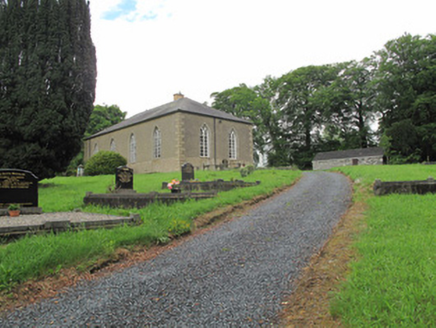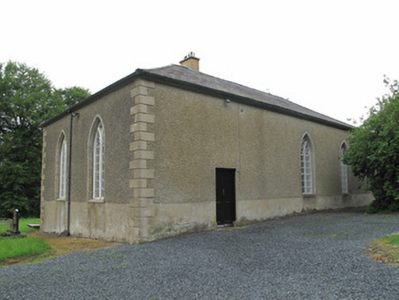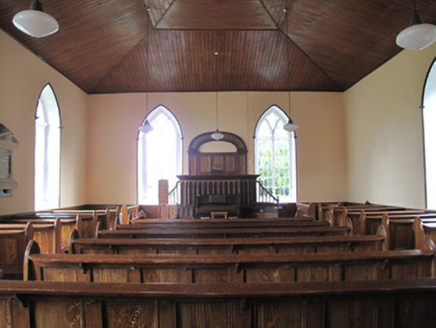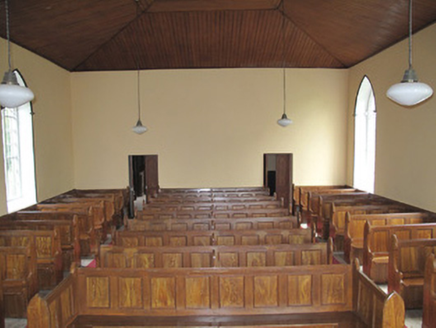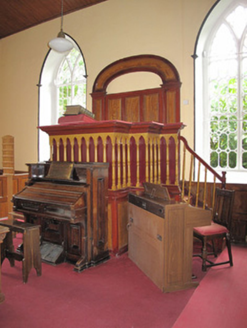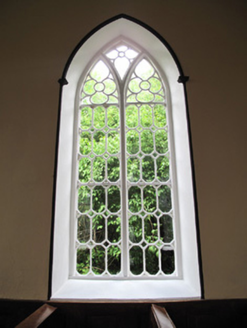Survey Data
Reg No
41402702
Rating
Regional
Categories of Special Interest
Architectural, Social
Previous Name
Corlea Presbyterian Meeting House
Historical Use
Church/chapel
Date
1830 - 1850
Coordinates
271656, 311597
Date Recorded
06/06/2012
Date Updated
--/--/--
Description
Freestanding four-bay single-storey Presbyterian Church, built c.1840, with two-bay end elevations. Hipped slate roof having recent yellow brick chimneystack, and cast-iron rainwater goods. Roughcast rendered walls having smooth rendered quoins and smooth rendered plinth. Pointed-arch window openings having tooled limestone surrounds and sills, with timber Y-traceried windows with decorative glazing. Square-headed door opening to east having timber double-leaf panelled door. Entry via hall to east, having rendered walls and ceiling, attic storage room over. Square-headed door openings to nave, having double-leaf timber panelled doors. Interior has rendered walls, with timber wainscoting to lower walls, tongue-and-groove timber battened ceiling, fixed carved timber pews, timber floor, carved timber pulpit with steps to each side with carved timber backdrop to rear, west, wall having panelled pilasters and elliptical arch detail, framing timber panelling. Organ to front of pulpit. Church situated within graveyard, having square-plan coursed limestone piers, cast-iron double-leaf gate and coursed limestone walls to boundary.
Appraisal
This interesting early nineteenth-century Presbyterian Church is a noteworthy feature as it retains its early form and character and acts as an important focal point in Corlea. Its attractive windows give the building an artistic quality and add interest to the structure. The graveyard with its early grave markers enhances the setting of the church. This simple Presbyterian church is enhanced by well made ecclesiastical fittings such as timber pews and pulpit. Like many such churches, it is simple in form, with minimal decoration used to interesting effect. An important component of the social and historical fabric of the locality, it is set within its own graveyard and forms a group with the adjacent former Manse. It is listed as a meetinghouse on the 1st edition OS map, which is indicative of its early date, when Presbyterians were forbidden from having official church buildings to worship in.
